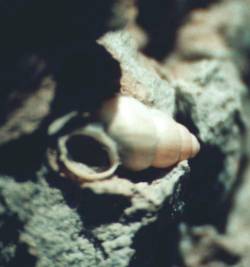Archaeological evidence in the burial environment
 Buried archaeological remains are diverse in their chemical composition. Similarly, the sizes of any remains can vary from buried landscapes and soils, occupation layers and foundations to microscopic diatoms and pollen grains. Different environmental conditions favour the preservation of different types of archaeological evidence. Waterlogged soils will preserve many types of organic and environmental remains, bone and shell are better protected by alkaline soils and pollen by acidic conditions. The longevity of any archaeological resource is determined by the many current site variables, but also past and current land use and the nature and size of the evidence itself. Studies into the stability of buried archaeological evidence do exist and some of the findings include:
Buried archaeological remains are diverse in their chemical composition. Similarly, the sizes of any remains can vary from buried landscapes and soils, occupation layers and foundations to microscopic diatoms and pollen grains. Different environmental conditions favour the preservation of different types of archaeological evidence. Waterlogged soils will preserve many types of organic and environmental remains, bone and shell are better protected by alkaline soils and pollen by acidic conditions. The longevity of any archaeological resource is determined by the many current site variables, but also past and current land use and the nature and size of the evidence itself. Studies into the stability of buried archaeological evidence do exist and some of the findings include:
- Glass and its production methods vary considerably and this has been found to influence the rates of weathering. Equally, many of the chemicals used to colour glass are susceptible to chemical degradation.
- Metal artefacts can vary from single elements to complex alloys and their longevity below ground will be determined by these metals, their corrosion products and the chemistry of the surrounding soil environment.
- Earthenware manufacture involves the firing of clays which produces a more chemically stable and structurally stronger material than the original clay. Nonetheless, they are still susceptible to gradual breakdown in many soil environments. The temperature of firing and the composition of any non-clay material as temper may also influence structural and chemical stability.
Below ground, soil chemistry, water content and the burial depth will also be relevant to the longevity of building foundations and how tree roots interact with these remains will again be influenced by the chemical composition of any building stones and their cementing agent where used. Chemical weathering of stone by roots or associated fungi has been seen at a Bronze Age granite roundhouse on Dartmoor. This was seen as a brown stain with accompanying loss of feldspar integrity where the granite was in contact with bracken rhizomes
Studies into the chemistry of woodland soils
How the buried archaeological resource will be affected by rainfall percolating through the canopy (Through Fall (TF)) will be largely dependant upon the chemistry of the surrounding soil and their interactions. The ability of a soil to neutralize any acidic inputs is termed its buffering capacity. A soil with a high carbonate content such as a rendzina is able to neutralize relatively high acidic levels whereas raw sands or peaty soils are more sensitive to acidic inputs. In some podzols, the influence of atmospheric deposition was still observed at a depth of 40 cm. Some palaeoenvironmental indicators such as molluscs are composed of calcium carbonate, and are readily dissolved by an acidic environment. Where these occur in neutral or weakly acidic soils, the influence of TF chemistry may be relevant.
While literature on the chemical alteration of archaeological evidence through root activity is limited, there are many publications concerning the weathering of soil minerals and the influence of root exudates and associated microbiological activity. Changes in the structure of reference minerals buried at various depths within different soils have been attributed to both the soil horizon and the surface vegetation. Increased mineral weathering is associated with dissolution by ectomycorrhizal activity and hyphal incursion. Studies into mineral weathering due to root exudates have shown various results. These different findings emphasize the complexity of mineral weathering rates that are dependent upon soil type, temperature, horizon chemistry, water content, microbial activity, vegetation type and root exudates. However, like archaeological evidence, the mineral longevity is primarily influenced by its own chemical composition.
Factors controlling the preservation of archaeological evidence
Examination by Forest Research of buried reference soil minerals has identified three primary process believed to be the major controlling influences of weathering rates:
- Soil pH
- Soil solution saturation
- Soil water movement
To build upon the findings of the mineral weathering study outlined above, conservationists from English Heritage are collaborating with Forest Research in the burial of modern analogues of a selection of archaeological materials. These are buried within a woodland experimental site where intensive environmental monitoring is occurring. This work will contribute to a better understanding of artefact preservation in woodland soils.
It is well known that an acidic solution will dissolve many substances, including soil minerals and archaeological materials. However, an acidic environment can favour the preservation of some materials (such as pollen grains) that would rapidly degrade in an alkaline soil. Thus, the soil pH can strongly influence what type of buried materials will be preserved.
The more saturated a soil solution is with the same, or similar ions to the composition of an archaeological material, the better the likelihood of preservation. Such a soil acts to buffer against dissolution by providing ions for chemical reactions that would otherwise come from the archaeological material.
Soil moisture and oxidation levels are closely linked, and a soil saturated with static water develops a reducing environment that often favours archaeological evidence preservation. However, a predominantly dry soil will not create a reducing environment but may still favour archaeological preservation albeit of different types. The worst environment for any preservation is a soil with high quantities of flowing or fluctuating water. Here reducing environments and soil solution saturation will not occur, favouring chemical dissolution.
